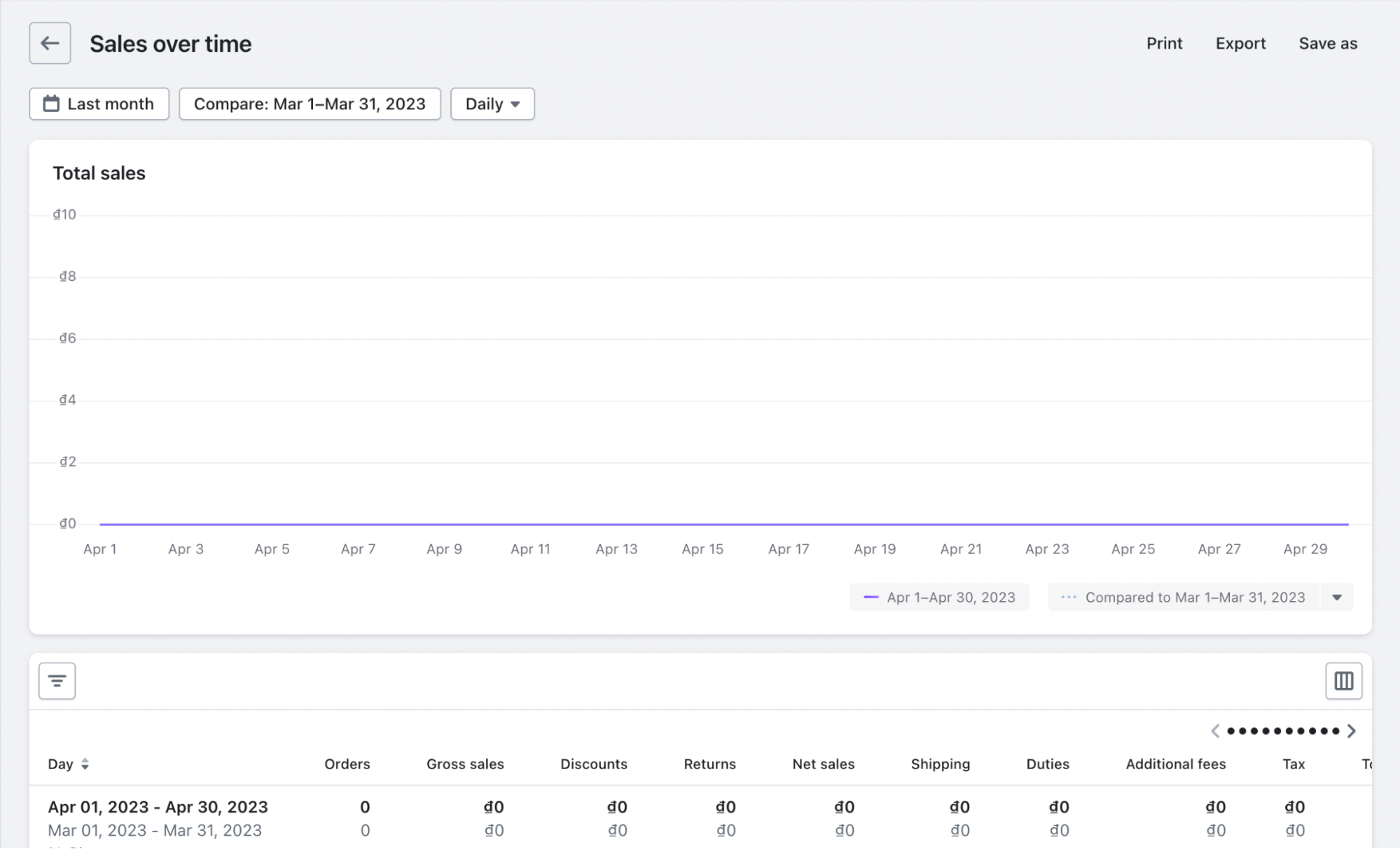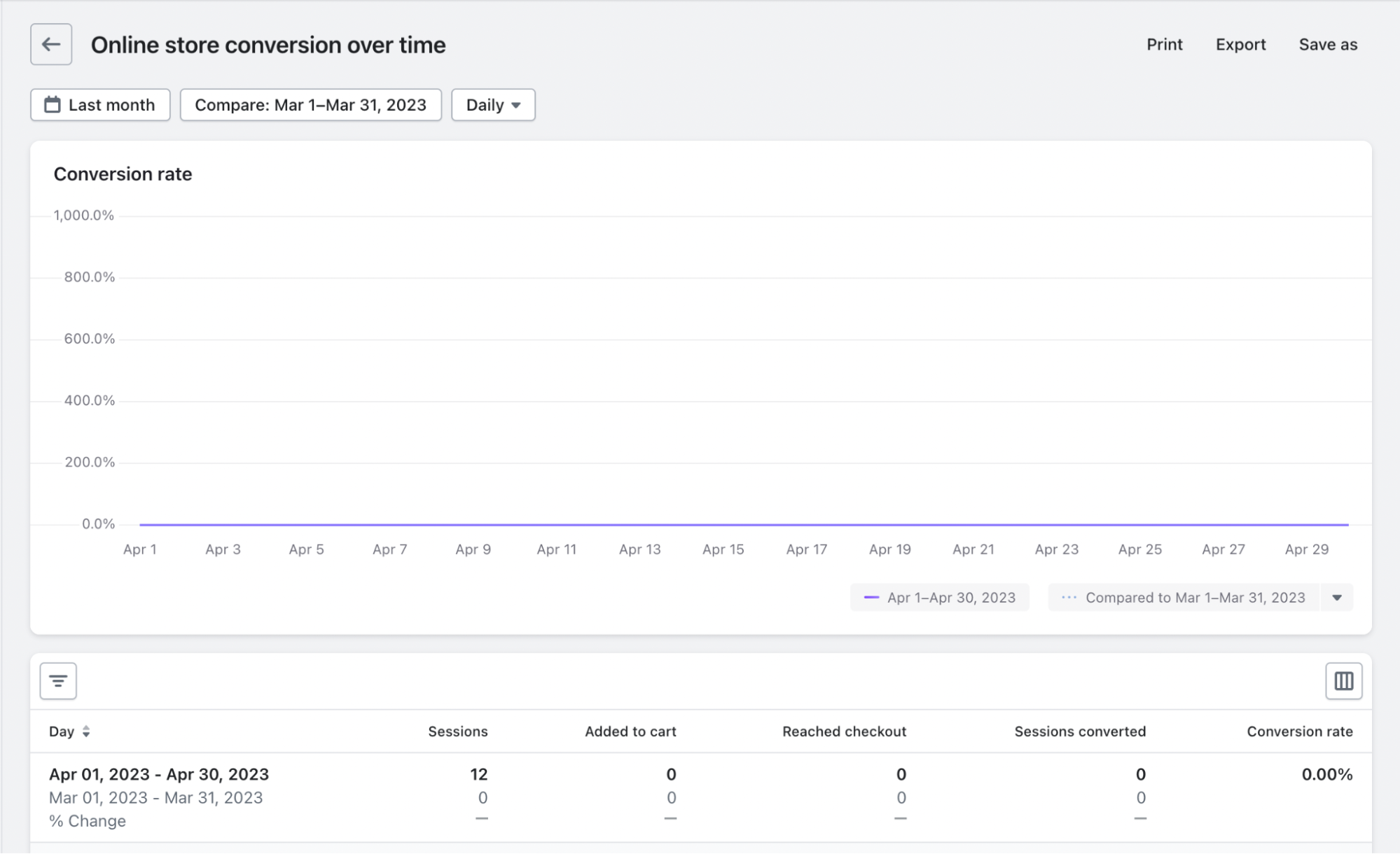Measuring the Impact of Product Reviews

Product reviews can have a significant impact on a Shopify store's performance, including improving conversion rates, increasing customer trust, and driving more traffic to the store. However, measuring their impact and optimizing the review strategy is essential to maximize the benefits of product reviews. Here are some ways merchants can measure the impact of product reviews on their Shopify store:
Track Conversions
One of the most critical metrics to track is conversions. Merchants can use Shopify's built-in analytics tools to monitor the impact of product reviews on conversion rates. By comparing conversion rates before and after implementing product reviews, merchants can see if there is a significant improvement in sales. Here's how:
- Log in to your Shopify account and navigate to the "Analytics" section of your dashboard.
- The “Analytics” section shows the total number of orders and sales for a specific period.
- Under "Sales and Orders," you can see the total number of orders and sales for a specific period. In the “Total sales” and “Total orders” sections, click to “View report” upper right hand corner.

The Sale report

The Order report
- Set the period to the month or week before implementing product reviews and record the number of orders and sales. A5. fter implementing product reviews, repeat the same process for the same period and compare the number of orders and sales to the previous period.
- If there is a significant increase in the number of orders and sales after implementing product reviews, it indicates that the reviews are having a positive impact on conversions.
- Merchants can also use the "Conversion" report under the "Analytics" section to see the conversion rate for their store. Set the period before and after implementing product reviews and compare the conversion rates.

The Conversion report
Analyze Customer Feedback
Analyzing customer feedback is an essential part of any successful business strategy. By analyzing customer feedback, businesses can identify areas for improvement, address customer concerns, and develop new products and services that better meet customer needs. Here are some critical steps in analyzing customer feedback:
- Collect feedback: The first step in analyzing customer feedback is to collect it. There are many ways to collect feedback, including surveys, customer reviews, and social media. A good product review app can streamline the feedback collection process by providing a central location for customers to leave feedback and for merchants to manage it.
- Categorize feedback: Once feedback has been collected, it's essential to categorize it. This can be done manually by reading each piece of feedback and assigning it to a category or automatically using tools like sentiment analysis software. Categorizing feedback makes it easier to identify trends and patterns.
- Identify key issues: After categorizing feedback, it's essential to identify the key issues. This involves reviewing the feedback and identifying the most common complaints or concerns. Merchants can use this information to address the issues and improve their products and services.
- Develop an action plan: Once key issues have been identified, merchants should develop an action plan to address them. This might involve improving product quality, providing better customer service, or developing new products or services that better meet customer needs.
- Monitor progress: Finally, it's essential to monitor progress and measure the impact of any changes made in response to customer feedback. This might involve monitoring sales data, tracking customer reviews, or conducting follow-up surveys to gauge customer satisfaction.
By following these steps, merchants can effectively analyze customer feedback and use it to improve their business strategy and drive long-term success.
Optimize Review Strategy
Optimizing a review strategy is an essential step in leveraging product reviews to boost conversions on Shopify. Here are some critical steps in optimizing a review strategy:
- Encourage reviews: The first step in optimizing a review strategy is encouraging more reviews. This can be done by sending automated follow-up emails after a purchase, offering incentives for leaving a review, or featuring customer reviews prominently on product pages.
- Monitor review quality: Once reviews start coming in, monitoring their quality is essential. This involves checking for spam or fake reviews and addressing any negative reviews. Merchants can use review management tools to help with this process.
- Use reviews in marketing: Reviews can be a powerful marketing tool, so using them in marketing efforts is essential. This might involve featuring customer reviews in ads, using review quotes in email campaigns, or sharing customer photos and videos on social media.
- Continuously improve: Optimizing a review strategy is an ongoing process. Merchants should continually monitor their review strategy, test new tactics, and adjust as needed.
By following these steps, merchants can effectively optimize their review strategy and use product reviews to boost conversions on Shopify. With the proper review management tools and a focus on continuous improvement, merchants can turn customer feedback into a powerful marketing tool that drives long-term success.
Monitor SEO
Reviews can also impact a store's search engine rankings. Merchants can monitor their SEO performance and see if there is an improvement after incorporating product reviews into their strategy. Here's how:
- User-generated content: Product review apps allow customers to generate user-generated content through reviews. This content can include relevant keywords and phrases that can help improve a store's SEO.
- Fresh content: Search engines tend to favor websites that regularly update their content. By adding new product reviews regularly, a store can keep its content fresh and improve its search engine ranking.
- Increased engagement: Positive product reviews can increase engagement on a store's website and lead to longer visit durations and lower bounce rates. These factors can indirectly improve a store's SEO.
- Social proof: Product reviews can provide social proof to potential customers, which can increase the likelihood of making a purchase. This can lead to more sales and improve a store's SEO through increased traffic and engagement.
While product review apps may not directly monitor SEO, they can indirectly impact a store's search engine optimization. By using a product reviews app to collect and showcase reviews on a store's website, merchants can improve their website's overall user experience, increase engagement, and potentially improve their search engine ranking over time.
In conclusion
Product reviews can have a significant impact on a Shopify store's performance. To measure this impact, merchants should track conversions, analyze customer feedback, optimize their review strategy, use review analytics, and monitor SEO. By doing so, merchants can ensure they are getting the most out of their product reviews and continue to improve their store's performance.